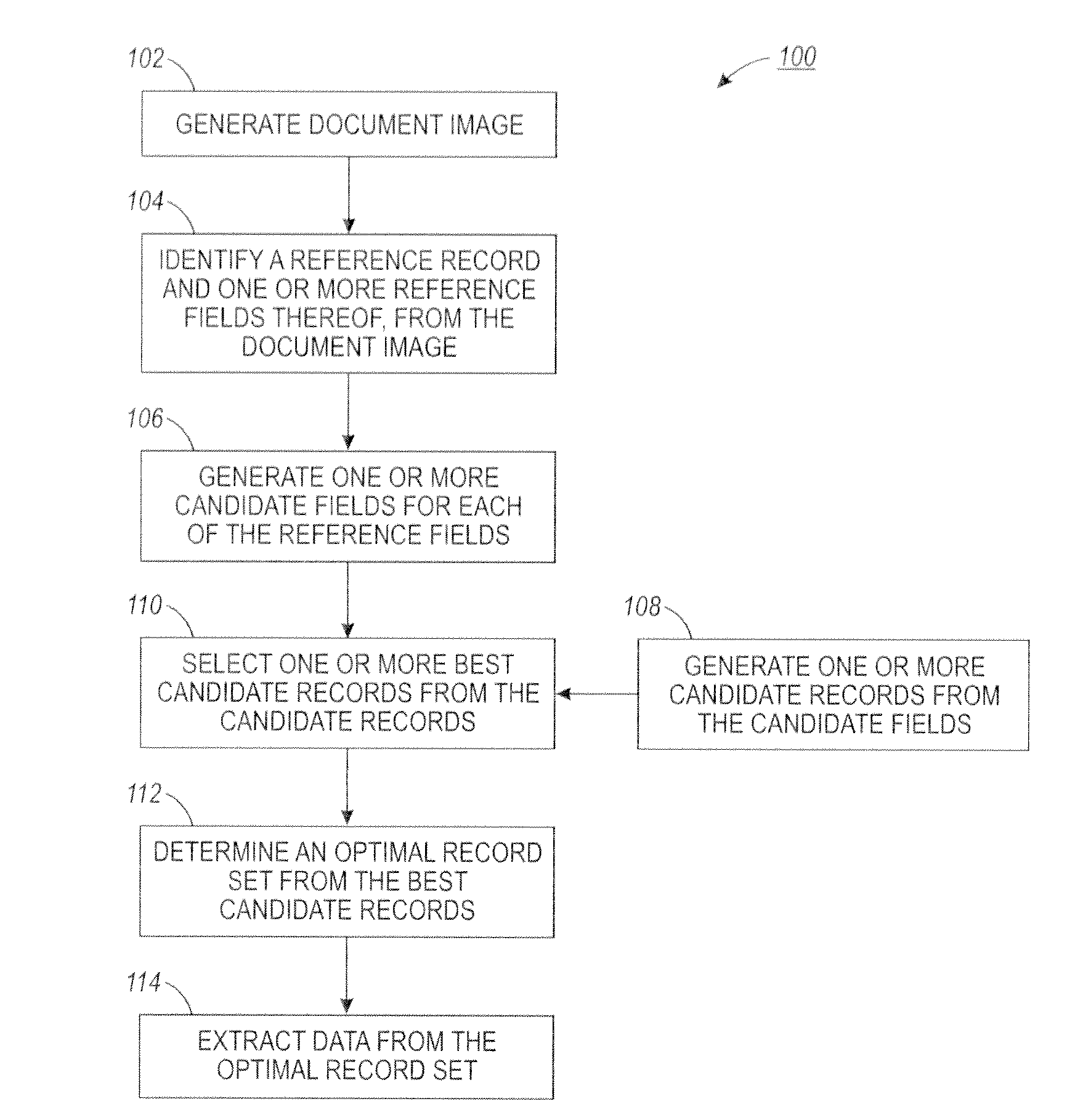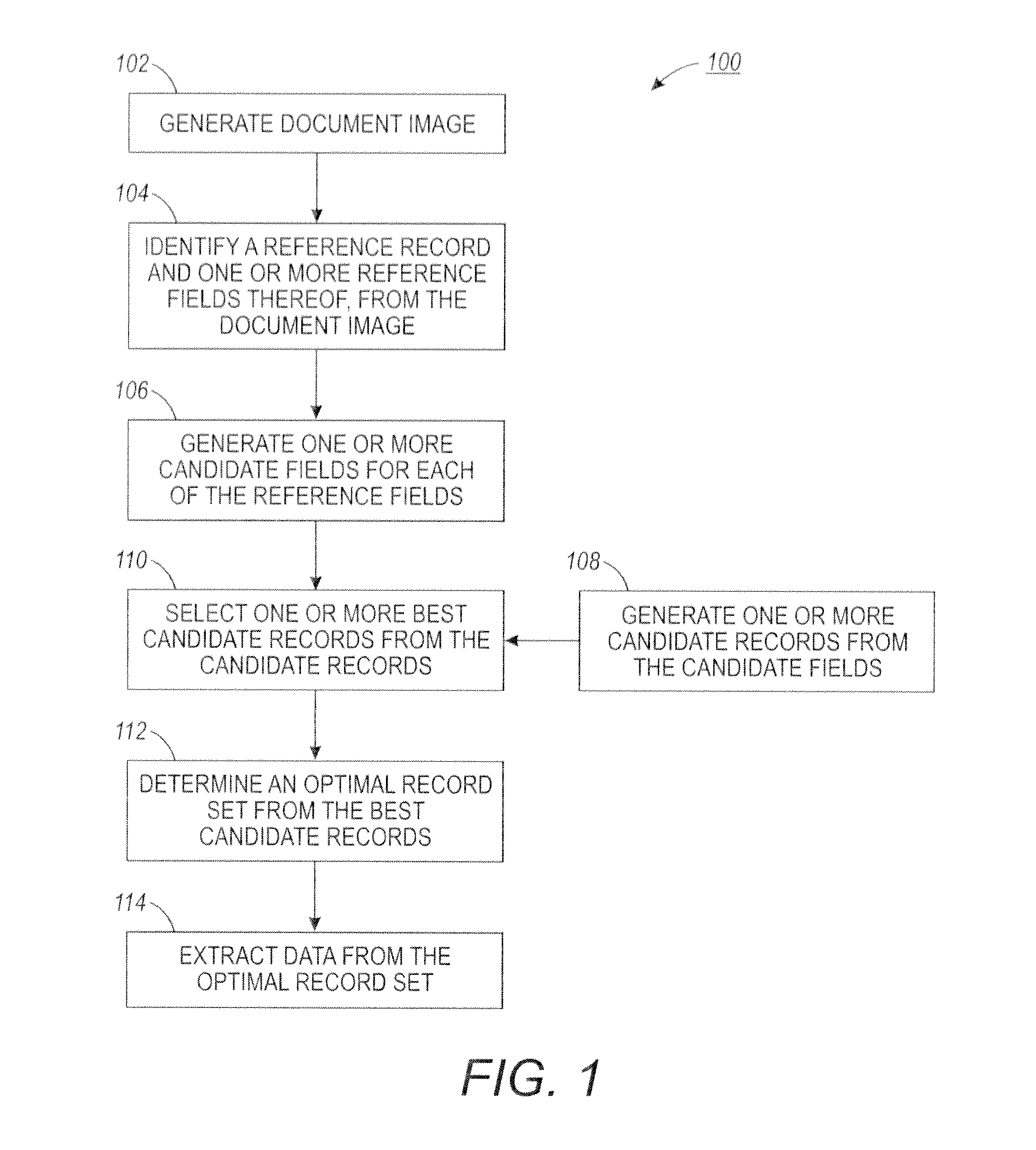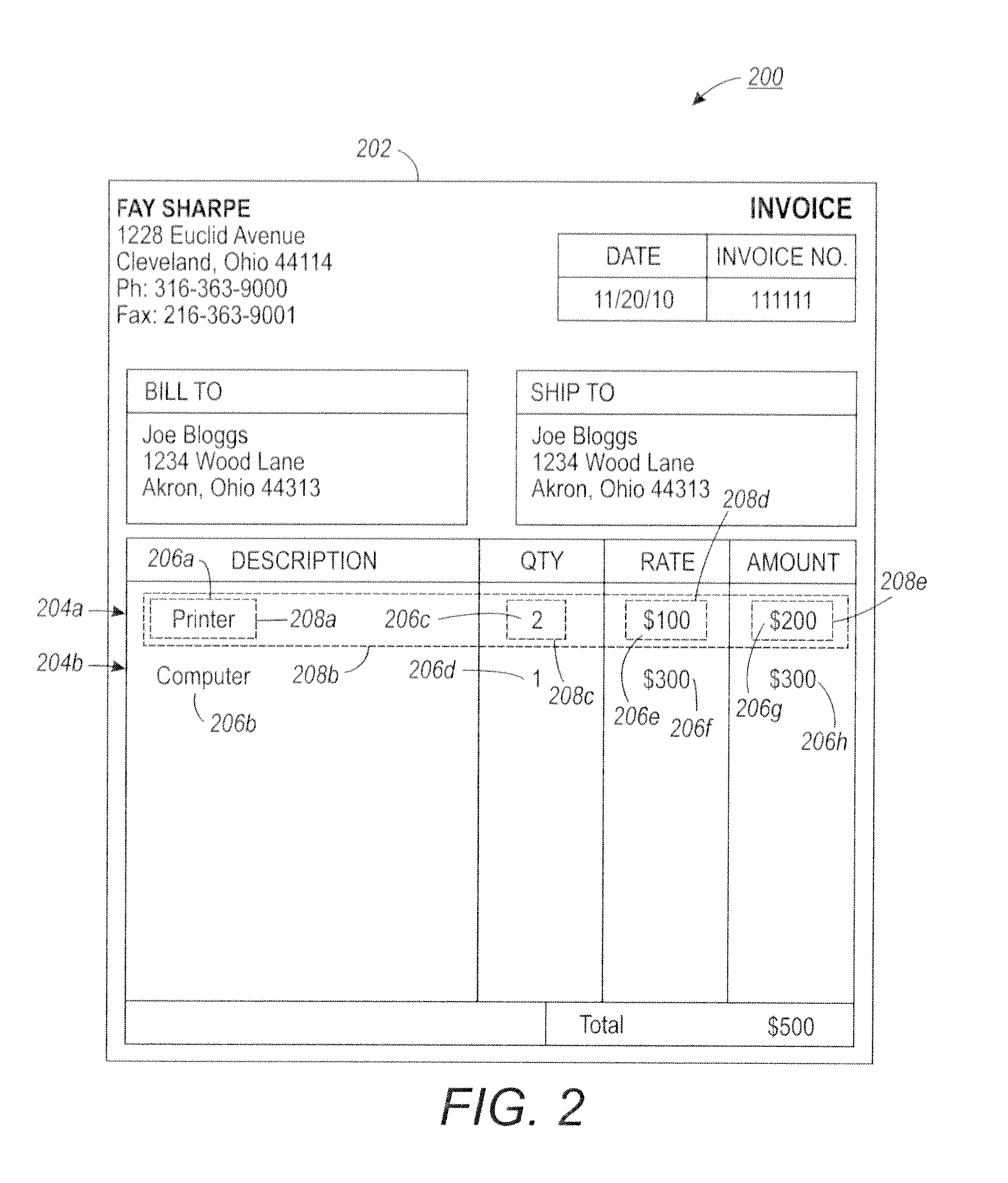Finding repeated structure for data extraction from document images
a document image and repeated structure technology, applied in the field of document processing, can solve the problems of insufficient or unreliable levels of automation in data extraction tasks, manual data extraction costs can be quite high, and manual processing can dramatically increase the cost of operations
- Summary
- Abstract
- Description
- Claims
- Application Information
AI Technical Summary
Benefits of technology
Problems solved by technology
Method used
Image
Examples
Embodiment Construction
[0023]One or more embodiments or implementations are hereinafter described in conjunction with the drawings, where like reference numerals are used to refer to like elements throughout, and where the various features are not necessarily drawn to scale. It is to be appreciated that while the descriptions center on the case of finding repeated structure within one page of a document, the same methods apply equally to finding repeated structure within multiple pages of a document and within and / or across multiple documents.
1.0 OVERVIEW
[0024]Repetition of structure is prevalent in documents. In document design, such repetition conveys the underlying logical and function structure of the data. For example, in invoices, the names, unit prices, quantities and other descriptors of every line item are arranged in consistent spatial structure. Disclosed herein, methods and systems employing the same provide a general approach to extracting such repeated structure from documents. The structura...
PUM
 Login to View More
Login to View More Abstract
Description
Claims
Application Information
 Login to View More
Login to View More - R&D
- Intellectual Property
- Life Sciences
- Materials
- Tech Scout
- Unparalleled Data Quality
- Higher Quality Content
- 60% Fewer Hallucinations
Browse by: Latest US Patents, China's latest patents, Technical Efficacy Thesaurus, Application Domain, Technology Topic, Popular Technical Reports.
© 2025 PatSnap. All rights reserved.Legal|Privacy policy|Modern Slavery Act Transparency Statement|Sitemap|About US| Contact US: help@patsnap.com



